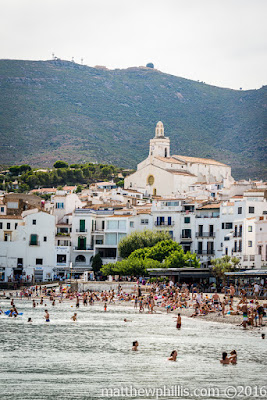 |
| Catalonia's northern city of Girona. |
 |
| Girona is a real gem. |
 |
| The steps of the Cathedral. |
 |
| The colourful houses that line the river in Girona. |
 |
| One of the many bridges. |
 |
| The Placa. |
 |
| Gustave's red iron bridge. |
 |
| Girona. |
 |
| Hand-made jewellery in Cadaques. |
 |
| Cadaques - a white-washed town on the Costa Brava. |
 |
| Anyone home? |
 |
| The beautiful Cadaques. |
 |
| This view and they are both on their phones... |
 |
| The finish line! |
 |
| Abseiling down. |
 |
| The Ferrata on Montserrat. |
 |
| Enjoy the view! |
 |
| The gang. |
Between my first Ferrata in September and now, late December, I have done 3 more. The first, on Montserrat, one was the most exciting and will always stick in my memory as the best, the last as the toughest and scariest in Agulles Rodones (a K5 - the toughest being a K6), but the most beautiful would have to be the Cala de Moli just near Sant Feliu de Guíxols. We probably started a little too late, arriving at around 9:30am, as it was Summer still and a Sunday to boot. We were part of a long line for the course, but the sun was, we were warm and with friends - enjoy it! It turned out to be quite slow for the most part - in some parts we just had to hook on and wait, and not everywhere is comfortable to wait, legs hanging over the water, sun beating down on your face and your harness riding up your bum. Most people doing this were tourists, not locals, and had little experience - it can be quite scary for some people, a slight fear of heights for example, or maybe people with no enough upper body strength to hold themselves up with clipping onto the next safety line. The whole things took us about 3 hours and it was worth it as the views were stunning and it was another Ferrata under my harness. Beer and lunch came next, and as much as I love climbing, Spanish food in the sun is a great way to top off any day! It had been a great summer in general, and I was very happy to be back in Catalunya with good friends. Autumn and Winter was on it's way, but that doesn't stop you hiking and climbing here.
 |
| Sant Feliu de Guíxols seen from the Ferrata. |



No comments:
Post a Comment